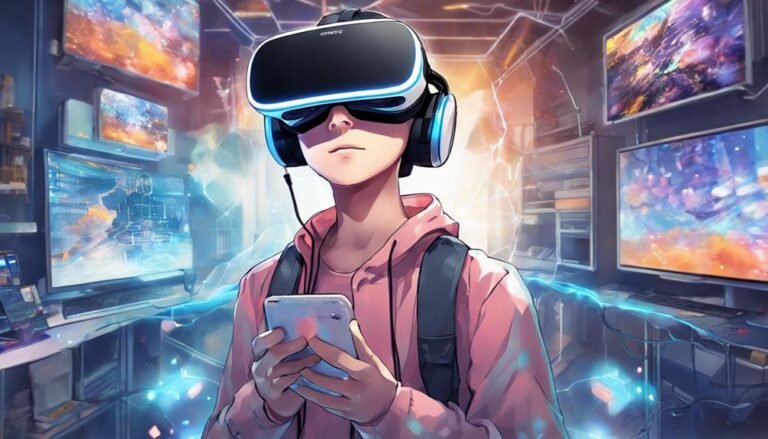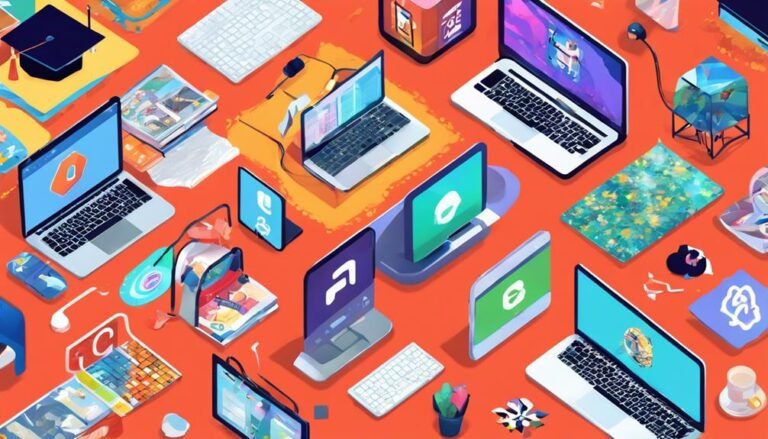What Are the Advantages of Blended Learning Approaches?
Explore the benefits of blended learning for enhanced flexibility and accessibility. Enjoy remote access to course materials, flexible study options, and engaging interactive content outside physical classrooms. Personalized learning awaits with tailored instruction, immediate feedback, and customized experiences. Engage in increased student participation with dynamic activities, multimedia presentations, and hands-on experiences for better outcomes. Discover improved learning through interactive engagement, practical applications, and essential skill development. Embrace diverse learning styles with accommodating approaches, visual aids, and interactive exercises. This is just the beginning of how blended learning can revolutionize your educational journey.
Key Takeaways
- Enhanced flexibility and accessibility for learners with remote access to course materials.
- Personalized learning opportunities based on individual learning styles and immediate feedback.
- Increased student engagement through interactive activities and real-world applications.
- Improved learning outcomes with active participation and practical application of concepts.
- Facilitation of different learning styles through diverse methods and interactive exercises.
Enhanced Flexibility and Accessibility
Blended learning approaches offer increased flexibility and accessibility for learners of all backgrounds and schedules. With remote access to course materials and interactive content, you can engage in learning anytime, anywhere. This flexibility allows you to balance your studies with work, family commitments, or other responsibilities.
The ability to access course materials remotely means you're no longer confined to a physical classroom. Whether you're at home, traveling, or simply prefer studying in a different environment, you can easily log in and continue your learning journey.
Furthermore, the interactive nature of the content keeps you engaged and enhances your understanding of the material.
Personalized Learning Opportunities
By tailoring learning experiences to your individual preferences and pace, blended learning approaches offer personalized opportunities for you to maximize your educational outcomes. Customized instruction and individualized feedback are key components of personalized learning in a blended approach:
- Tailored Instruction: Blended learning allows for customized instruction based on your learning style, interests, and strengths. This personalized approach guarantees that you receive content in a way that resonates with you, increasing understanding and retention.
- Flexible Pacing: With blended learning, you can progress through material at your own pace. This flexibility means you can spend more time on challenging concepts while moving quickly through areas where you excel, optimizing your learning efficiency.
- Immediate Feedback: Blended learning provides instant feedback through online quizzes, interactive exercises, and assessments. This immediate feedback loop helps you identify areas of improvement quickly, allowing you to address misunderstandings promptly and stay on track towards your learning goals.
Increased Student Engagement
Engaging students through interactive activities and real-world applications is a pivotal aspect of maximizing learning outcomes in blended learning approaches. By incorporating interactive activities, such as online discussions, virtual simulations, and multimedia presentations, blended learning environments captivate students' attention and foster active participation. Technology integration plays a vital role in enhancing student engagement by providing a dynamic platform for learning that appeals to varying learning styles.
Interactive activities, such as collaborative group projects conducted online or virtual labs, enable students to apply theoretical knowledge in practical scenarios, making the learning process more engaging and meaningful. Students can interact with course materials in a hands-on manner, promoting deeper understanding and retention of concepts. Additionally, technology integration allows for immediate feedback on assessments and progress tracking, keeping students motivated and engaged throughout their learning journey.
Incorporating a variety of interactive activities and leveraging technology in blended learning not only increases student engagement but also cultivates essential skills such as critical thinking, problem-solving, and digital literacy.
Improved Learning Outcomes
To enhance learning outcomes in blended learning approaches, you actively participate in interactive activities designed to promote the practical application of theoretical knowledge. This active engagement fosters a deeper understanding of the material and leads to improved retention rates.
Here's how interactive experiences contribute to enhancing learning outcomes:
- Increased Retention: Interactive activities, such as simulations, virtual labs, and group discussions, help reinforce key concepts by allowing you to apply them in real-world scenarios. This hands-on approach enhances your ability to retain information long-term.
- Practical Application: By engaging in interactive experiences, you have the opportunity to put theory into practice. This practical application not only reinforces your understanding of the material but also helps you develop essential skills that are transferable to real-world situations.
- Personalized Learning: Blended learning approaches often incorporate adaptive technologies that tailor the learning experience to your individual needs. This personalized approach ensures that you receive targeted support and resources to address your specific learning goals, further enhancing your overall learning outcomes.
Facilitation of Different Learning Styles
Interactive activities in blended learning not only enhance retention rates and practical application but also facilitate the adaptation to different learning styles. By incorporating visual aids and interactive exercises, blended learning caters to diverse preferences in how individuals absorb information.
For visual learners, images, diagrams, and videos can make complex concepts more accessible and memorable. On the other hand, interactive exercises such as quizzes, simulations, and group discussions appeal to kinesthetic and auditory learners by providing hands-on experiences and opportunities for verbal exchange.
Blended learning's versatility in accommodating various learning styles guarantees that participants can engage with the material in ways that suit their individual preferences and strengths. This adaptability promotes a deeper understanding of the subject matter and enhances overall learning outcomes.
Additionally, by offering a mix of traditional classroom instruction with online resources, blended learning provides a well-rounded educational experience that addresses the diverse needs of learners in today's dynamic educational landscape.
Conclusion
To sum up, blended learning offers a multitude of advantages that can greatly benefit both educators and students. With enhanced flexibility, personalized learning opportunities, increased engagement, improved outcomes, and accommodation of different learning styles, this approach allows for a dynamic and effective learning experience.
As the saying goes, 'Knowledge is power,' and blended learning empowers individuals to reach their full potential in the ever-evolving landscape of education.
Embrace the benefits of blended learning and explore the possibilities for growth and success.







